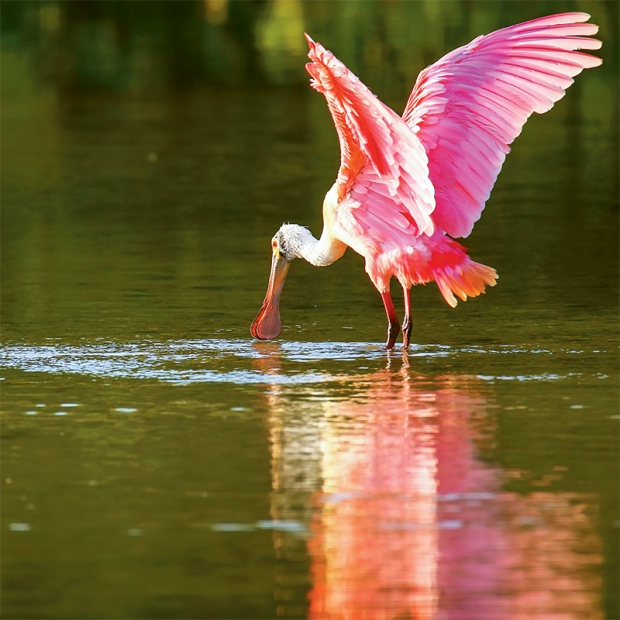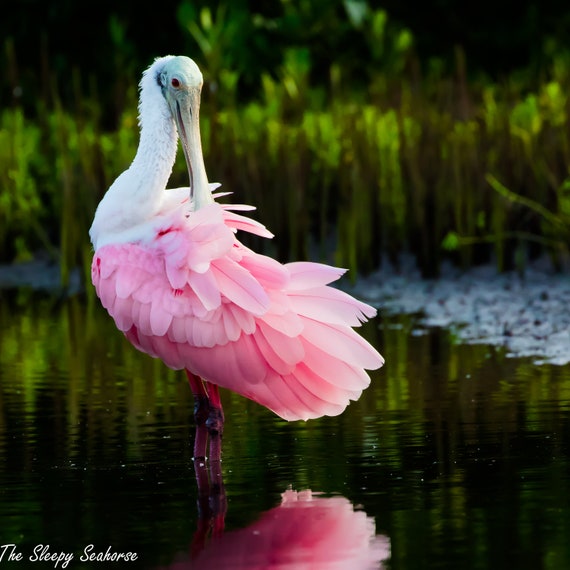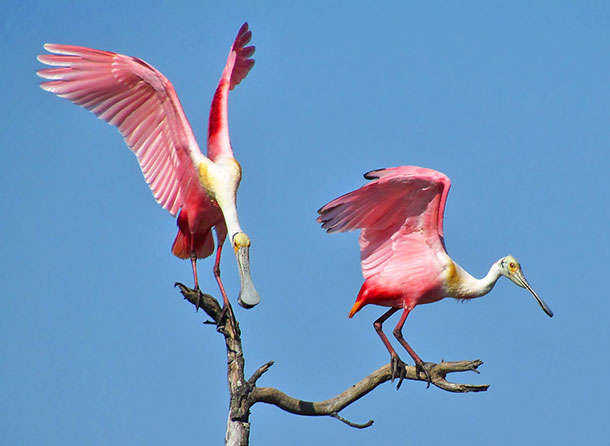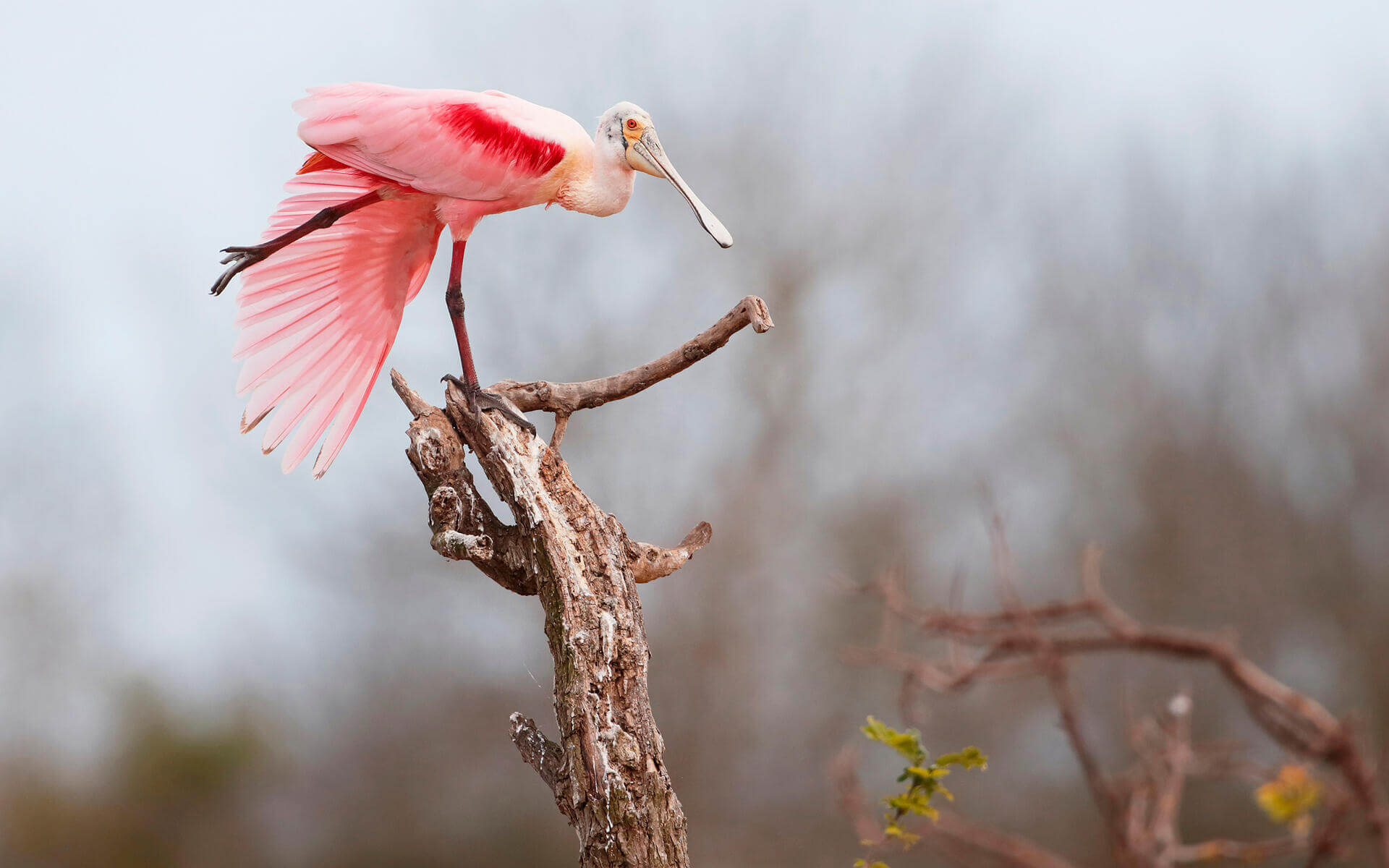The Roseate Spoonbill (Platalea ajaja) is a stunning wading bird found in the Americas, particularly in the wetlands and coastal regions of the southeastern United States, the Caribbean, and Central and South America. It is known for its unique appearance and striking pink plumage.
The Roseate Spoonbill gets its name from its spoon-shaped bill, which is long, flattened, and broad at the tip. The bill is grayish in color with a touch of black, and it gradually transitions to a vibrant pink towards the base. The bird’s plumage is primarily a beautiful rosy pink, with hints of white on the wings and a touch of green on the neck and back during breeding season. However, juveniles and immature birds have duller plumage, with grayish-brown feathers.

These graceful birds inhabit a variety of wetland habitats, including marshes, swamps, mangroves, and mudflats. They are skilled waders, using their long legs to navigate shallow waters in search of food. The Roseate Spoonbill feeds primarily on small aquatic creatures, such as fish, crustaceans, mollusks, and insects. It forages by sweeping its bill back and forth through the water, detecting prey by touch. When a prey item is detected, the bird snaps its bill shut, capturing the food.

During the breeding season, Roseate Spoonbills engage in elaborate courtship displays to attract mates. These displays involve various behaviors, including aerial flights, ritualized feeding, and elaborate movements of the head, wings, and body. They typically nest in colonies, often alongside other wading bird species. The nests are constructed in trees or shrubs, and both males and females participate in building the nest. The female lays a clutch of three to five eggs, which are incubated by both parents. After hatching, the chicks are cared for and fed by their parents until they are ready to fledge.

The Roseate Spoonbill has faced significant challenges in the past due to habitat loss, hunting, and the use of their feathers in the fashion industry. However, conservation efforts and protections have helped to stabilize their populations in many areas. Wetland conservation and restoration projects play a vital role in preserving the habitat that these birds depend on.

In summary, the Roseate Spoonbill is a captivating wading bird known for its unique spoon-shaped bill and beautiful pink plumage. Its presence in wetland habitats adds to the beauty and diversity of the natural environment. Efforts to protect and preserve their habitats are essential for ensuring the continued survival of this remarkable species.



Related Posts











